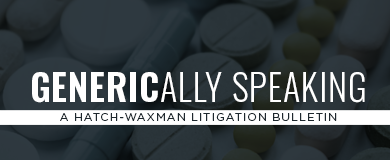- Acumen Powered by Robins Kaplan LLP®
- Affirmative Recovery
- American Indian Law and Policy
- Antitrust and Trade Regulation
- Appellate Advocacy and Guidance
- Business Litigation
- Civil Rights and Police Misconduct
- Class Action Litigation
- Commercial/Project Finance and Real Estate
- Corporate Governance and Special Situations
- Corporate Restructuring and Bankruptcy
- Domestic and International Arbitration
- Entertainment and Media Litigation
- Health Care Litigation
- Insurance and Catastrophic Loss
- Intellectual Property and Technology Litigation
- Mass Tort Attorneys
- Medical Malpractice Attorneys
- Personal Injury Attorneys
- Telecommunications Litigation and Arbitration
- Wealth Planning, Administration, and Fiduciary Disputes
Acumen Powered by Robins Kaplan LLP®
Ediscovery, Applied Science and Economics, and Litigation Support Solutions
-
April 15, 2024Robins Kaplan Named to 2024 BTI Client Service A-Team
-
April 9, 2024Robins Kaplan LLP Files Complaint Against Social Media Giants Meta, Snap, TikTok on Behalf of Spirit Lake Nation, Menominee Indian Tribe of Wisconsin
-
April 8, 2024Tara Sutton, Emily Tremblay Shortlisted for Euromoney’s Women in Business Law Awards
-
April 24, 2024IP Leadership Executive Summit
-
April 24, 2024IP Odyssey: Navigating the Latest Developments in Intellectual Property Law
-
April 30, 2024Navigating Generational Dynamics
-
March 2024e-Commerce: Pitfalls and Protections
-
March 22, 2024‘In re Cellect’:
-
March 14, 2024How Many Cases Have You Tried to a Verdict?
-
September 16, 2022Uber Company Systems Compromised by Widespread Cyber Hack
-
September 15, 2022US Averts Rail Workers Strike With Last-Minute Tentative Deal
-
September 14, 2022Hotter-Than-Expected August Inflation Prompts Massive Wall Street Selloff
Find additional firm contact information for press inquiries.
Find resources to help navigate legal and business complexities.
Amarin Pharma, Inc. v. Hikma Pharms. USA Inc.
Vascepa® (icosapent ethyl)
August 3, 2021

Case Name: Amarin Pharma, Inc. v. Hikma Pharms. USA Inc., No. CV 20-1630-RGA-JLH, 2021 WL 3396199 (D. Del. Aug. 3, 2021) (Hall, J.)
Drug Product and Patent(s)-in-Suit: Vascepa® (icosapent ethyl); U.S. Patents Nos. 9,700,537 (“the ’537 patent”), 8,642,077 (“the ’077 patent”), 10,568,861 (“the ’861 patent”)
Nature of Case and Issue(s) Presented: The patents-in-suit cover methods of using icosapent ethyl to reduce the risk of cardiovascular events in patients. Vascepa currently has two FDA-approved indications: (i) treatment of severe hypertriglyceridemia (the “SH indication”); and (ii) cardiovascular risk reduction (the “CV indication”). Hikma launched a generic version of Vascepa after receiving FDA approval of its ANDA with a “section viii” carve out regarding the patents-in-suit. That is, Hikma represented to the FDA that it would not market its generic product for the uses covered by the patents-in-suit, which at the time of the filing of Hikma’s ANDA, was only the SH indication. But by the time Hikma’s product hit the market, the majority of doctors who prescribed Vascepa did so for uses other than the SH indication, including the CV indication. Amarin alleged that Hikma was aware of that fact and promoted the administration of its product in a way that infringed the patents-in-suit. Moreover, it alleged that insurance provider Health Net was aware that use of Hikma’s generic for the CV indication infringed the patents-in-suit. That was because Health Net’s plans required “Prior Authorization” before it would cover and pay for either Vascepa or Hikma’s generic version, and a medical provider was required to indicate whether the prescription was being given for either the SH or CV indication. Amarin also alleged that Health Net encouraged the use of the allegedly infringing generic by requiring a higher co-pay for Vascepa. Health Net filed a motion to dismiss. Despite acknowledging “[n]either side has cited any case in which a health insurer has been found liable to a pharmaceutical company for inducing infringement of a drug method of use patent,” the court recommended denying Health Net’s motions to dismiss.
Why Amarin Prevailed: The court noted that: (i) Health Net might not have taken affirmative acts with the intent to cause infringement; (ii) Health Net’s formulary and pre-authorization actions might not influence providers to prescribe or beneficiaries to use the generic product in an infringing way; or (iii) the plaintiffs’ own pricing decisions might encourage the use of the generic product over the branded product. But the court found that the pleadings stage was an inappropriate time to assess whether Health Net’s approval and payment process affected physicians’ prescription decisions. Since the court must view the allegations in the light most favorable to Amarin at the motion to dismiss stage, the court found Amarin’s claims plausible. While Amarin’s novel inducement theory survived the plausibility standard for pleadings, ANDA holders and third-party insurance providers will have to wait to see how the infringement case pans out as the case moves forward.
Related Publications
Related News
If you are interested in having us represent you, you should call us so we can determine whether the matter is one for which we are willing or able to accept professional responsibility. We will not make this determination by e-mail communication. The telephone numbers and addresses for our offices are listed on this page. We reserve the right to decline any representation. We may be required to decline representation if it would create a conflict of interest with our other clients.
By accepting these terms, you are confirming that you have read and understood this important notice.
